
Published in the interest of your health by MELOMED Spring 2023 | Issue 46 melomag HERECLICKTO VIEW MALARIA 08 HYPERTENSION IN PREGNANCY 02 IT'S ALLERGY SEASON 06
MELOMED CLAREMONT 148 Imam Haron Road, Claremont T 021 683 0540

Our Melomed Gatesville maternity ward is now complete and boasts a beautiful setting - ideal for a wonderful birthing experience. been designed with a gentle, modern and soothing colour scheme
Our Melomed Gatesville maternity ward complete and boasts a beautiful setting ideal for a wonderful birthing experience. been designed with a gentle, modern and soothing colour

MELOMED GATESVILLE Clinic

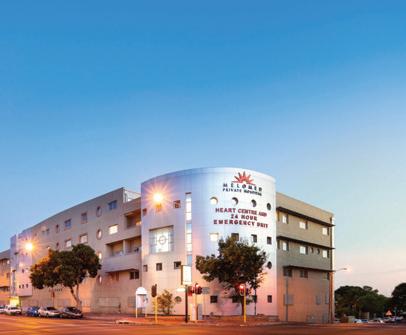

MELOMED TOKAI Cnr Keysers & Main Road T 021 764 7500

MELOMED RICHARDS BAY
John Ross Eco Junction T 035 791 5300
PROVIDING AFFORDABLE QUALITY HEALTHCARE. www.melomed.co.za
Book your hospital tour today. Contact the client service officer on 021 637 8100 or email mgcso1@melomed.co.za or mgcso3@melomed.co.za
BOOK
TOUR PROVIDING AFFORDABLE QUALITY HEALTHCARE. www.melomed.co.za
YOUR MATERNITY
Book your hospital tour today. Contact the service officer on 021 8100 email mgcso1@melomed.co.za or mgcso3@melomed.co.za
BOOK
TOUR PROVIDING AFFORDABLE QUALITY HEALTHCARE. www.melomed.co.za
THE ART AT YOUR DOORSTEP.
YOUR MATERNITY
ADVANCED STATE OF
MELOMED BELLVILLE Cnr Voortrekker & AJ West Street T 021 948 8131
Road, Gatesville T 021 637 8100
MELOMED MITCHELLS PLAIN Symphony Walk, Town Centre T 021 392 3126

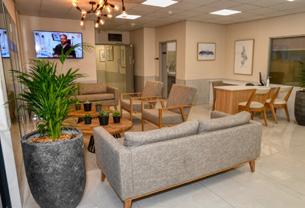



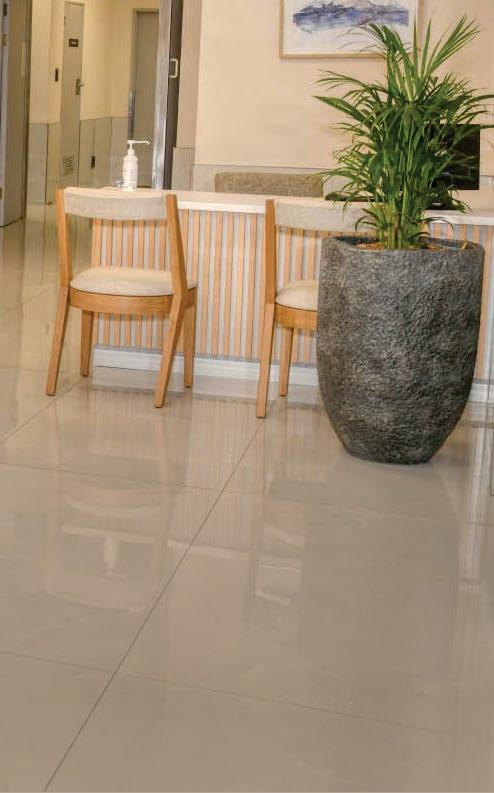
PROVIDING AFFORDABLE QUALITY HEALTHCARE. www.melomed.co.za Book your hospital tour today. Contact the client service officer on 021 637 8100 or email mgcso1@melomed.co.za or mgcso3@melomed.co.za Our Melomed Gatesville maternity ward is now complete and boasts a beautiful setting - ideal for a wonderful birthing experience. The unit has been designed with a gentle, modern and soothing colour scheme. BOOK YOUR MATERNITY TOUR














CUSTOMER CARE LINE +27 21 707 7000 www.pharmadynamics.co.za 1) Data on file. CVSRB1016/04/2023 A ordable tasty recipes for the whole family, with a focus on incorporating DASH ingredients. Dietary Approaches to Stop Hypertension A joint initiative between Pharma Dynamics and The Heart and Stroke Foundation South Africa WORLD COOKBOOK AWARDS 1 IN TWO CATEGORIES Corporate Brands & Professional Health and Nutrition Winner SCAN TO DOWNLOAD
Health Check: Hypertension in pregnancy


It's allergy season
Diagnosis: Malaria

Infographic: Exercise during pregnancy. Safe and Beneficial
Leading the way in ENT excellence
Know it All: Calling all men, working together we can beat prostate cancer!

Health Strategy: Smoking tobacco and your kidneys

All About: When the bleeding won't stop

Travel: Family-friendly accommodation in South Africa's interior

Recipe: Braaivleis, pap, rugby and sunny skies!

House Call: Dr Ogbonnaya Orji
PUBLISHER:
Health Bytes CC


CONTACT:
christa@health-bytes.co.za
GRAPHIC DESIGNER:
Marius Laubser
TEL: 021 913 0504
INDEMNITY: The information contained in Melomag is intended for general informational and educational purposes only, and not to replace professional medical advice. Persons requiring any medical advice or treatment should consult their relevant qualified healthcare professional. The publisher cannot accept any responsibility for any act, omission, loss, damage, or the consequences thereof caused by reliance by any person upon the information contained in the publication. The information included in Melomag is subject to copyright and all rights are reserved. The information may not be sold, resold, transmitted or otherwise made available or disseminated in any manner via any media to third parties unless the prior written consent of the publisher has been obtained.
UPFRONT 08 24 26 18 14 02 is on Follow us @melomed_melobabes 22 28 WHAT’S INSIDE
HEALTH BYTES
02 06 08 10 13 14 18 22 24 26 28

02 HEALTH CHECK
HYPERTENSION IN


Diagnosis and management
Hypertension is a common medical complication that affects 12 to 22% of all pregnancies. It is possible that the condition may lead to complications such as abruption (separation of the placenta from the wall of the uterus), cerebral hemorrhage, DIC-Hepatic failure (liver condition), eclampsia or acute renal failure.
In pregnant women, hypertension is diagnosed by means of a systolic blood pressure of 140 or more or a diastolic blood pressure of 90 or more. In severe cases, systolic blood pressure from 160 or diastolic blood pressure from 110 may be diagnosed.

There are various classifications of hypertension in pregnancy: In pregnancies under 20 weeks of gestation, the patient may suffer from chronic hypertension, while gestation of 20 weeks and more may present preeclampsia or eclampsia; gestational hypertension or chronic hypertension with super imposed preeclampsia.
Treatment for chronic hypertension may involve Angiotensin-converting enzyme (ACE) inhibitors; Angiotensin II receptors blocker (ARBs) or Thiazide or thiazidic-like diuretic.
However, these treatments may lead to several concerning complications that can endanger the expecting mother and unborn child’s lives. As such, utmost care should be taken when prescribing any hypertension medication to a pregnant woman.
Prevention of pre-elampsia
Pregnant women with chronic hypertension should be given 75-150mg aspirin once daily from 12 weeks of gestation.
Healthcare professionals should also offer placental growth factor (PLGF) testing to help rule out pre-eclampsia between 20 and 35 weeks of gestation.
The PLGF based test measures the amount of PLGF in the blood plasma or serum. PLGF is a protein involved in placental angiogenesis (the development of new blood vessels). In normal pregnancy, PLGF levels rise and peak at 26 -30 weeks, so when PLGF levels do not rise during pregnancy, there may be placental dysfunction.
Chronic hypertension
Treatments for chronic hypertension may include antihypertensive, Labetalol, Nifedipine, Methyldopa and aspirin.
Gestational hypertension
Gestational hypertension is a new onset of hypertension after 20 weeks’ gestation without a high level of protein present in the urine, but with a patient’s blood pressure measuring above 140/90.
Treatment could include Labetalol, Nifedipine and Methyldopa. However, this depends on the patient’s gestation period.
www.melomed.co.za | 03
Chronic hypertension with superimposed preeclampsia
Chronic hypertension with superimposed preeclampsia occurs in women diagnosed with chronic hypertension before 20 weeks’ gestation who develop a worsening high blood pressure and proteinuria or other complications during pregnancy.
Preeclampsia
Preeclampsia is a condition that shows an onset after 20 weeks of pregnancy.

Along with high blood pressure, preeclampsia signs and symptoms may include: excess protein in urine, decreased levels of platelets in the blood, or increased liver enzymes.
Severity of preeclampsia
Mild preeclampsia (non-severe) is characterised by high blood pressure and protein in the urine.
Severe preeclampsia has those symptoms as well as signs of damage to the liver or kidneys.

is a variant of preeclampsia.
It is a life-threatening pregnancy complication that can occur during the later stages of pregnancy, or soon after childbirth.
HELLP (Hemolysis, Elevated Liver enzymes and Low Platelets) syndrome
04
Pathophysiology: impaired vascular transformation resulting in impaired utero-placental perfusion
Normal pregnancy and pathological pregnancy differ vastly. In a pathological pregnancy, there is a failure of endovascular EVT invasion, retention of vasocontractility, insufficient and pulsatile blood flow to intervillous space, inadequate utero-placental perfusion and lack of proper maternal-fetal exchange.
Risk factors
• Primigravida (first time pregnancy)
• Increasing intervals between pregnancies
• >40 years of age
• Previous history of pre-eclampsia
• Pre-pregnancy obesity
• Pregnancy resulting from a donor egg, embryo donation or donor insemination
• Diabetes
• Pre-existing hypertension
• Antiphospholipid syndrome
• Systemic Lupus Erythematosus
Women who had hypertensive disease during a previous pregnancy, or who suffer from chronic kidney disease, autoimmune disease, diabetes, chronic hypertension should especially be monitored for early symptoms of preeclampsia.

ABOUT THE AUTHOR
Dr. Tshimanga is a(n) Obstetrician/Gynaecologist and currently practices at Melomed Richards Bay.

Tel: 035 791 5446
Email: drtshimangagynae@gmail.com
www.melomed.co.za | 05
DR. MBIKAYI TSHIMANGA MBchB (UNIKIN), Dip.Obst(SA), M.Med (O&G), (UFS), FCOG (SA) , F.MAS (India)
06
COMMON ALLERGY TRIGGERS GET SOME RELIEF



www.melomed.co.za | 07
Malaria

Malaria is caused by a parasite that enters human red blood cells causing damage. The parasite is spread to humans mainly via the female anopheles mosquito. There are several species of the parasite with Plasmodium falciparum bring the most prevalent in South Africa. After being bitten by a mosquito carrying the Plasmodium falciparum parasite, it might take 10 to 14 days before a person starts to show signs and symptoms associated with malaria. Sometimes, this incubation period is shorter or can be weeks long.

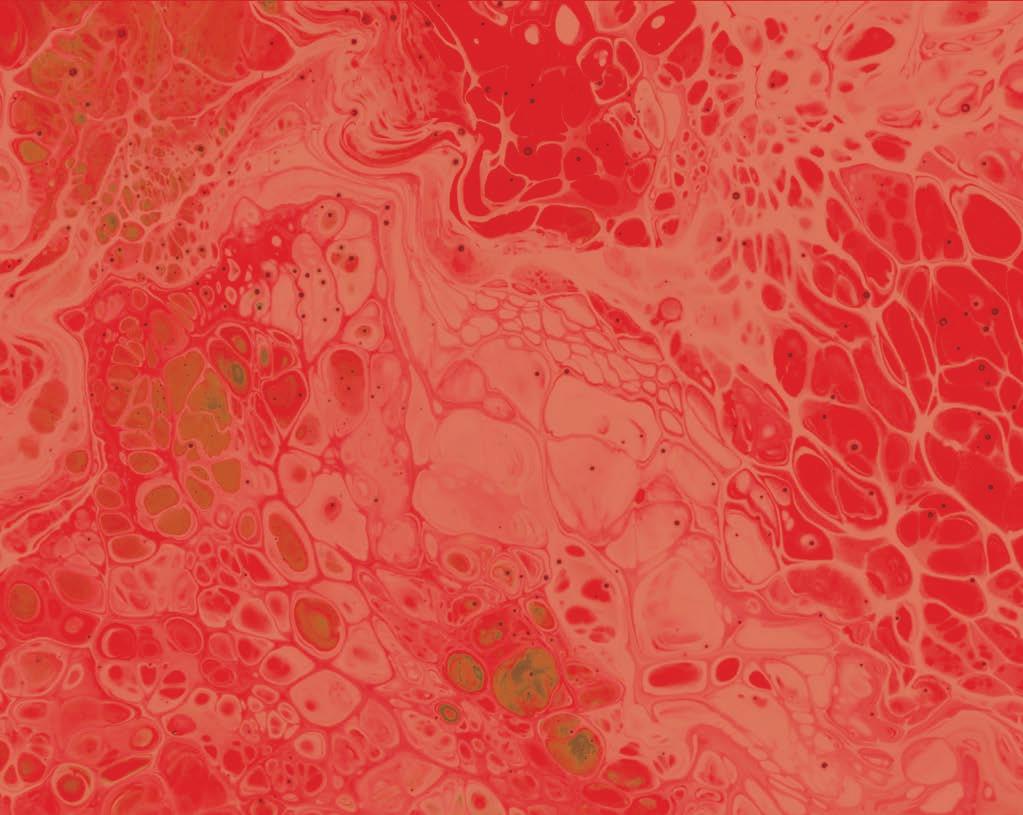
Malaria remains a major killer in endemic areas of the world with the majority of morbidity and mortality seen in sub Saharan Africa. It is however a highly preventable disease.
The mosquito carrying the parasites generally bite between dusk and dawn. Prevention strategies therefore include:

• Covering exposed areas of skin.
• Applying mosquito repellents onto the skin.
• The use of bed nets.
• Room sprays and coils.
• Take chemoprophylaxis when travelling in areas with high incidence of malaria.
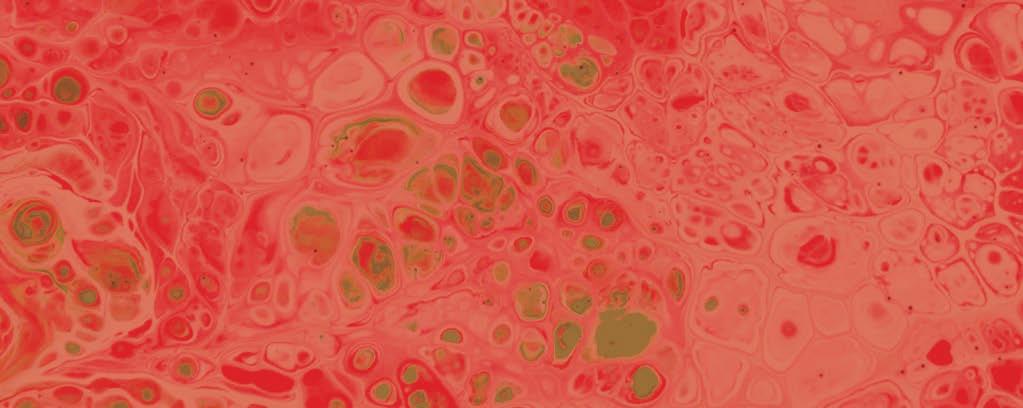
• Mosquito elimination by indoor residual spraying and the use of Insecticide treated nets.


• Malaria vaccines for children in areas with high P. falciparum transmission.


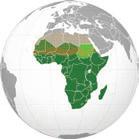
DIAGNOSIS
08
In the Northern areas of KwaZulu Natal malaria is endemic. There is no clear demarcation as to the prevalence of Plasmodium infected anopheles mosquitos. With ease of travel between endemic and non endemic areas, it is not surprising that we see malaria infections even in the Richards Bay and Empangeni areas.

In 2021 there were about 247 malaria cases in the world of which about 619000 deaths. 95% of worldwide malaria case and 96% of malaria deaths occurred in Africa and 80% of deaths were of children under 5 years old.
Symptoms of malaria may range from mild to very severe including death.
Severe symptoms:
Confusion
Coma
Seizures
Shortness of breath
Dark urine
Jaundice
Low blood sugar
Shock
ABOUT THE AUTHOR
Mild symptoms:
Fever
Muscle Pain
Headaches
DR. ASHLEY MURUGAN
Malaria is easily diagnosed in the laboratory. Rapid diagnosis and early treatment is key to preventing severe malaria and malaria related death.
MBChB, FCP (SA), MMed (UCT), Dip HIV Management (SA), Advanced Diabetic Care (CDE)
Dr. Murugan is a(n) Specialist Physician and currently practices at Melomed Richards Bay.

Tel: 035 791 5420
Email: dramuruganpractice@gmail.com
www.melomed.co.za | 09
INFOGRAPHIC 10
www.melomed.co.za | 11
ABOUT THE AUTHOR
DR. MBIKAYI TSHIMANGA
MBchB (UNIKIN), Dip.Obst(SA), M.Med (O&G), (UFS), FCOG (SA) , F.MAS (India)
Dr. Tshimanga is a(n) Obstetrician/Gynaecologist and currently practices at Melomed Richards Bay.

Tel: 035 791 5446
Email: drtshimangagynae@gmail.com
12
Dr. Zubair Doolarkhan

Leading the way in ENT excellence across


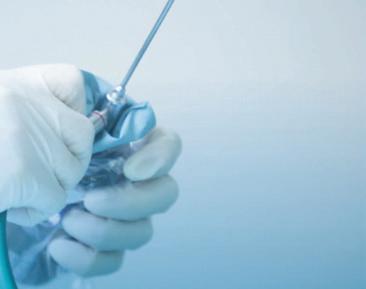
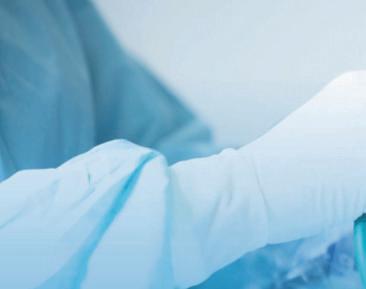
South African universities
In the world of medicine, the pursuit of knowledge and expertise is a neverending journey. It takes individuals who are not only dedicated to their craft, but are also passionate about sharing their wisdom with the next generation.
Dr. Zubair Doolarkhan, a distinguished ENT surgeon at Melomed Bellville Hospital, has proven himself to be a true trailblazer in the field of Ear, Nose, and Throat (ENT) surgery. He is also a member of the International Working Group on Endoscopic Ear Surgery and a founding member of the Pan African Federation of Endoscopic Ear Surgery. His commitment to advancing the knowledge and skills of fellow ENT specialists and registrars has led to an exciting and invaluable opportunity – an invitation to train other colleagues and registrars at prestigious universities across South Africa.
Dr. Doolarkhan’s journey towards becoming a respected authority in ENT surgery is a testament to his unwavering dedication. With a career spanning several decades, he has not only achieved remarkable success in his clinical practice, but has also continually sought out opportunities to enhance his own knowledge. His passion for learning has driven him to stay abreast of the latest advancements in ENT treatment and patient care.
Recognising his exceptional expertise, universities across South Africa have eagerly reached out to Dr. Doolarkhan to share his wealth of knowledge. He is the Lead Faculty at Cape Endoscopic Ear Surgery Workshop hosted by the

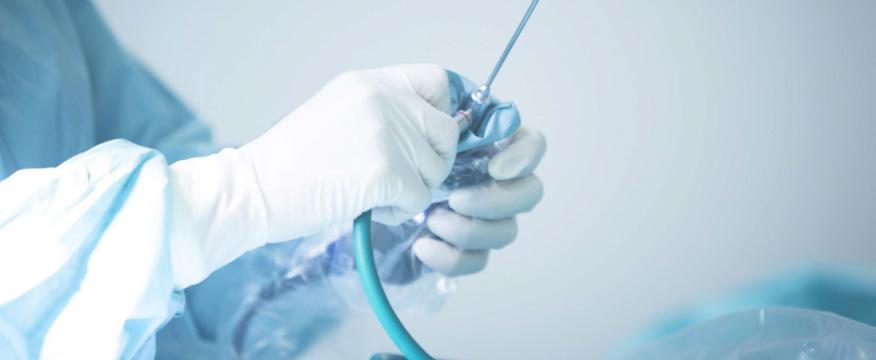
University of Stellenbosch and he recently returned from lecturing and demonstrating Endoscopic Ear Surgery at the University of Pretoria Temporal Bone Ear Course.
His engaging training sessions have become a much-anticipated event, where participants are exposed to cuttingedge techniques, innovative procedures, and insightful patient case studies. Dr. Doolarkhan’s ability to seamlessly blend theory with practical applications has made his sessions not only informative, but also incredibly inspiring.
These training sessions have had a profound impact on the ENT community, equipping aspiring professionals with the tools they need to excel in their careers.
Dr. Doolarkhan’s teaching approach goes beyond the confines of the classroom, instilling in his learners a deep sense of responsibility towards patient care, clinical excellence, and continuous improvement.
As news of Dr. Doolarkhan’s transformative training sessions spreads, the medical community at large is taking note of his invaluable contributions. His dedication to the field of ENT surgery has not only elevated the level of care provided to patients, but has also strengthened the bond between the healthcare industry and academic establishments. This collaboration serves as a shining example of the positive outcomes that can arise when medical professionals come together to share knowledge and expertise.
In conclusion, Dr. Zubair Doolarkhan’s journey from a distinguished ENT surgeon to a revered educator exemplifies the power of passion and the impact of knowledge-sharing in the medical field. His commitment to enhancing the capabilities of ENT specialists and registrars across South African universities is a testament to his unwavering dedication to the betterment of patient care and the advancement of medical science.
PROVIDING AFFORDABLE QUALITY HEALTHCARE. www.melomed.co.za
Contact Dr. Doolarkhan’s rooms at Melomed Bellville Hospital: T: 021 946 2191 E: zubaird@surgeon.co.za
CALLING ALL MEN
WORKING TOGETHER WE CAN BEAT PROSTATE CANCER!
The prostate gland is an accessory reproductive gland found in men, located in the pelvis, in front of the bladder and its normal size is that of a walnut. This gland contributes roughly 20-25% towards the man’s ejaculate and is crucial for a man’s normal reproductive function. Through this gland, runs a small pipe that carries urine from the bladder to the outside world, called the urethra. Any growth in the prostate can therefore put pressure on this pipe and disturb the normal flow of urine.

Prostate cancer is now amongst the leading causes of cancer related deaths in men, to be specific it is now the second commonest cause of death in male patients diagnosed with any form of cancer, eclipsed only by lung cancer.

The main risk factors associated with this disease are age (over 50 years), a family history of prostate or breast cancer as well as being a man of African descent (black ethnicity). There are other risk factors such as smoking, obesity and living a sedentary lifestyle, but their overall contribution is still being investigated.
Symptoms can be divided into storage symptoms, which means they occur when the bladder is full and when someone is not voiding (passing urine), as well as voiding symptoms, which occur when urine is being passed or the bladder is being emptied. The commonest storage symptoms to look out for are waking up frequently to pass urine at night (nocturia), increased frequency of urination, which can happen both during the day and night, as well as urgency, which is the inability wait or postpone voiding once a full bladder has been appreciated, these patients often need to go “immediately” or risk messing themselves.

Nocturia
The voiding symptoms to look out for, include, difficulty initiating a urine stream, patients describe this as “having to wait” before they can go. Once voiding has commenced, the urine stream is poor or slow “has no power” as most patients would refer to it. If they are voiding outside it often only drops as far as their shoes and they have to strain to achieve this stream. Sometimes the stream gets interrupted a couple of times during the voiding process (intermittency) and even when they have finished voiding they feel as if there is some urine left in the bladder (incomplete voiding).
Difficulty initiating urine stream Urine stream poor or slow IntermittencyIncomplete voiding Frequent urination
Urgency
KNOW IT ALL 14
Early detection is key when it comes to treating prostate cancer.
Other symptoms to look out for which can be associated but not specific to prostate cancer, are blood in the urine or semen, painful urination and ejaculation.
Many patients will develop prostate cancer without experiencing any of these symptoms, which is why screening is so important, because it enhances early detection of the cancer. >>

www.melomed.co.za | 15
The screening and diagnosis of prostate cancer has come a long way, but has become easier in recent years. While most men still dread the infamous digital rectal examination (finger test) that has long been associated with screening for this type of cancer, most of them will find comfort in knowing that this type of exam is rarely done these days, unless it is absolutely necessary.
Screening has become as simple as doing a blood test (PSA) at your local clinic or general practitioner who would then refer you to a urologist if your result comes back abnormal. The test is readily available and inexpensive.

The urologist would normally proceed by taking a further history and doing clinical examination. Further tests such as an ultrasound scan, urine and additional blood tests form part if the clinical evaluation. These will then be followed by a prostate biopsy, which is tissue sampling of the prostate gland using a special needle. These tissue sample results will then confirm whether the patient has prostate cancer or not, since cancer is a tissue diagnosis.
Although the procedure may sound scary, in reality this a simple day procedure which can be done in an outpatient setting.
Once the diagnosis has been confirmed, the correct staging of the disease is determined using scans such a bone scan or more recently a PET scan which is more accurate. Other staging modalities include a CT scan and MRI scan depending on the patient’s disease profile and accessibility.
Once the correct staging has been obtained, usually a multidisciplinary discussion is held between the patient, the family, the treating urologist as well as an oncologist to discuss the best possible treatment plan for the patient.
Fortunately prostate cancer treatment has become easy these days with many treatment options especially for early disease. For most of these patients it is possible to achieve a 100% cure, which is why it is important to screen early to achieve early detection. Treatment options for early disease include hormonal therapy, surgery, radiotherapy which can be delivered from outside the body of directly into the prostate using radio-active seeds.
Even in patients with advanced disease, treatment options are plenty nowadays and they include hormonal therapy combined with systemic therapies such as chemotherapy and anti-androgens amongst others. These have been successful in providing symptomatic relief and prolonging survival even though the disease may already be at an advanced stage. Prostate cancer treatment is well tolerated nowadays and often the treatment with the best cancer outcome and with the least side effects will be chosen.
16
There are numerous patient support groups for patients already diagnosed with the disease including The Cancer Association of South Africa (CANSA) and The Prostate cancer foundation of South Africa where patients can get free support from professionals and other patients who have had the disease.


The take home message is that all men over the age of 50 years should screen for prostate and because of their higher genetic risk, men of African descent (black men), are recommended to screen from the age of 45 years. Patients who are at an even higher risk, i.e. patients who have a family history of breast or prostate cancer are recommended to screen from the age of 40 years. One annual PSA test is recommended.

Screening ensures early detection and early detection often equals a 100% cure. We need more awareness regarding the disease from the media, healthcare professionals, and mostly importantly fellow patients who have had the disease in order to remove the stigma and fears associated with it.
Working together we can beat prostate cancer!

DR. ZIPHOZONKE MKHIZE MBChB (UKZN), MMed (SMU), FC Urol (SA) Dr. Mkhize is a(n) Specialist Urologist at Melomed Richards Bay. Tel: 035 791 5422 Email: zipho.mkhize03@gmail.com www.melomed.co.za | 17
ABOUT THE AUTHOR
SMOKING TOBACCO AND YOUR KIDNEYS
Smoking cigarettes does not only a ect the lungs but it also has a profound impact on the body’s kidneys as well. Smoking has other catastrophic side e ects in addition to cancer.
In its natural state, tobacco that has been rolled into cigarettes contains enormous levels of nicotine. This substance is what makes smoking addictive.
The severe constriction of blood arteries that nicotine causes is well known. As a result, the downstream tissues are unable to receive su cient blood flow and oxygen delivery through the veins. This e ect is more likely to occur in the smaller, thinner blood veins that are closer to the kidneys and other organs than in the bigger ones. The kidneys are very susceptible to damage with any blood vessel constriction, requiring good flow of blood and a high oxygen concentration to carry out the jobs of the kidney.

Smoking for an extended period sti ens blood artery walls, permanently narrowing them. Beyond these veins, tissues experience persistent oxygen deficiency and untimely these tissues in the kidney, heart and brain which carry out the functions of these organs are damaged and scar permanently, becoming non-functional. In the kidney specifically the glomeruli will be damaged, and tubules become scarred and non- functional.
Smoking a ects the other components of blood too. The carbon monoxide found in cigarettes increases hemoglobin (Hb) levels and causing these red blood cells to become carboxyhemoglobin. This is a red blood cell that cannot carry oxygen any longer, which leads to hypoxia of cells and surrounding tissue. Hypoxia causes cell and ultimately tissue death. An increased Hb level has other adverse e ects on the body.
HEALTH STRATEGY 18
In particular in renal failure when patients are on dialysis complications such as clotting of a vascular access or stenosis of the vessels making up the access. The access is essential for dialysis and blood circuits on hemodialysis.
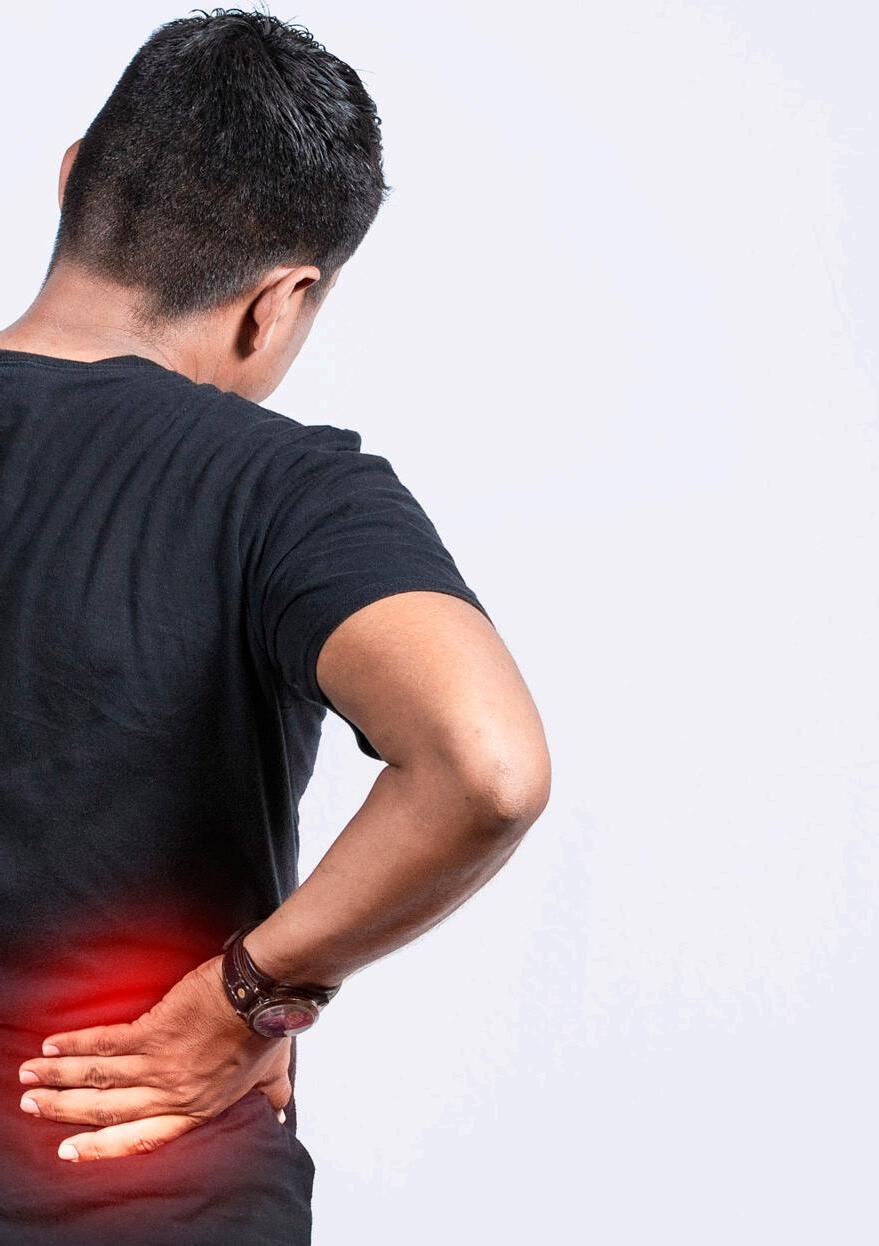
The di erent chemicals found in cigarettes have many other ill e ects. This include activation of the body’s immune response and an increased white blood cell count. This increase in white blood cell count encourages inflammation in the body, which in turn leads to arteriosclerosis of blood vessels and increased scarring in tissues if damaged.
Non-smokers are at risk due to inhaling the smoke when around the company of smokers. Stay away from smokers and protect yourself from the harmful substances. This is known as ‘passive smoking’ and can have the same e ects on non-smokers who are always in the company of a smoker, causing asthma, emphysema and even cancer.
Smokers
www.melomed.co.za | 19
with a 25-49 pack-year history have an increased risk of 42% compared with non-smokers and those with >50 pack years had 105% increased risk of kidney failure. >>
The picture below shows the damages of smoking on the kidneys.

Tobacco smoke chemicals cause patchy damage to the internal walls of Blood Vessels













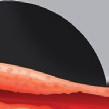





To heal these "roughened" injury patches, white blood cells & platelets in our blood rush to those specific spots. They release sticky repair substances that end-up attracting lipids (fats) normally circulating in the blood to easily "grasp" onto these rough surfaces.
Following this, lipids like Cholesterol start to deposit in such spots to form hard plaques (fancy word:"Atheroma").













This condition is called "ATHERO-SCLEROSIS".






These plaques narrow-down blood vessels in areas of the buildup somewhat like a drainage pipe with sludge deposits. Plaques also sti en the blood vessels at the site of deposition so that the vessels ultimately fail to increase their diameter when greater blood flow is required in a certain organ downstream.
Frequent, long termm smoking ultimately also sti ens the small blood vessels that permeate the kidney tissue. So, neither does your kidney (as a whole) receive enough oxygen, nor is it able to distribute whatever little oxygen it receives, among its diligent cells adequately. As a result, widespread kidney tissue injury sets-in, called GLOMERULOSCLEROSIS.
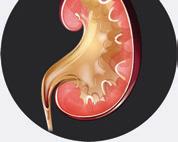
Every time the toxins enter your kidneys for removal via urine, they get to be in direct contact with the delicate urine forming tubes (nephrons). This further gives these chemicals an opportunity to corrode your nephrons from within, while on their way out.

Long term compromise in adequate blood flow raises your blood pressure & heart rate.

This simply robs the blood of all its sophistication! It enters your kidneys for filtration while Constantly "shoving and kicking" the blood vessel and the delicate kidney cells all the way. Such persistent "rude" behaviour by blood seriously injures your kidney filtration units.



1
3
6
20
2
4 5
7
By making the decision to stop smoking, you can improve your quality of life, minimize your chance of developing diseases and other health issues, and preserve the health of your kidneys. It can significantly alter how you feel and appear by improving your breathing capacity, elevating your energy level, and maintaining the function of your kidneys.
The longer you refrain from using cigarettes, the lower your risk of developing ailments, and quitting smoking can help with tobaccorelated health issues. That translates to fewer health issues, some of which are linked to CKD (heart disease, stroke, kidney cancer). According to the CDC's optimistic statistics, quitting can lead to the following outcomes.

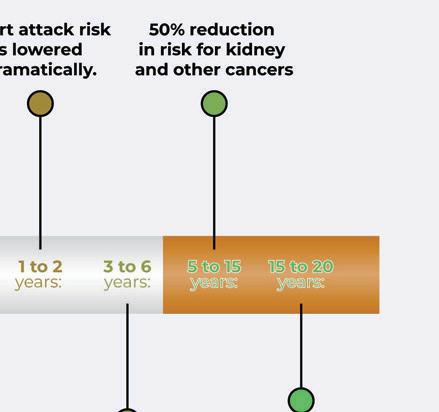

Smoking is a risk factor you can manage and overcome if you have the necessary tools and help from your family, friends and dialysis team. Find a program, manual, app, or medication that is e ective for you if you need help quitting cigarettes. This is achievable for you and could change your life!
MELOMED RENAL CARE (MRC): For more information on the services offered by Melomed Renal Care, please contact any one of our three-dialysis units.
Melomed Gatesville:
Unit Leader: Cynthia Smith
Call Phone: 060 993 3863
Skype Phone: 010 824 9262
Melomed Mitchells Plain:
Unit Leader: Michelle Jenniker
Call Phone: 066 487 2764
Skype Phone: 010 824 9218
Melomed Tokai:
Unit Leader: Charmaine Pockbass
Call Phone: 060 993 3885
Skype Phone: 010 824 9219
www.melomed.co.za | 21
BLEEDING When the won't stop
 By Dr Ashley Murugan
By Dr Ashley Murugan
HAEMOPHILIA is an inherited bleeding disorder in which the blood does not properly clot. This can lead to spontaneous bleeding and bleeding following injuries or surgery. Blood contains many proteins, called clotting factors, that help stop bleeding. People with haemophilia have low levels of either factor VIII or factor IX.
The severity of haemophilia is determined by the amount of factor in the blood. The lower the amount of the f actor, the more likely it is that bleeding will occur, which can lead to serious health problems. Haemophilia, which translates to ‘love of blood’, is an X-linked bleeding disorder often inherited through an X-linked recessive pattern. In 30% of cases, it results from a sporadic gene mutation.


How haemophilia is inherited:
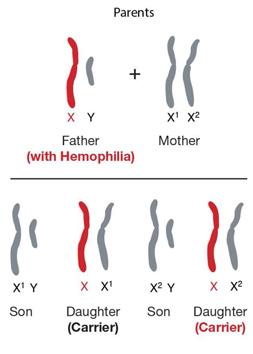
Female carriers can pass the affected gene to their children. The son of a carrier has a 50% chance of contracting haemophilia, while a daughter has a 50% chance of being a carrier. All daughters of men with haemophilia are carriers, while their sons are not affected.


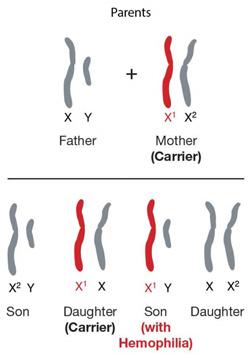
The three types of Haemophilia:
Haemophilia A: Caused by low levels of blood clotting factor VIII; affects one in 5 000 males at birth.


Haemophilia B: Caused by low levels of blood clotting factor IX; affects one in 30 000 males at birth.
Haemophilia C: Caused by low levels of blood clotting factor XI; extremely rare.
Haemophilia




ALL ABOUT 22
Common symptoms and bleeding sites:
Patients may experience bleeding spontaneously or after minor trauma. Common bleeding sites include large joints (knee and hip), muscles, the abdomen, gastrointestinal tract and brain.
Severity levels and factor activity:
Mild haemophilia: Factor activity >5%; bleeding only after major trauma or surgery, spontaneous bleeding is rare.
Moderate haemophilia: Factor activity between 1-5%; bleeding after injury and occasional spontaneous bleeding.
Severe haemophilia: Factor activity <1%; frequent spontaneous bleeding early in life, often affecting joints.
Treating acute bleeds: Prompt replacement of high-dose clotting factor concentrate with factor VIII or IX is crucial. If factor IX concentrate is unavailable, prothrombin complex concentrate may be used. Desmopressin is an option for mild haemophilia.
Preventing spontaneous bleeding in severe haemophilia:
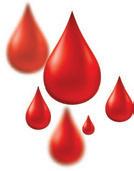
Frequent doses of clotting factor concentrates (2-3 times a week) or a monoclonal antibody like emicizumab can help prevent spontaneous bleeding in patients with severe haemophilia.
Prophylaxis:
1. Primary prophylaxis: Initiated early in childhood after the first bleed or before age three, without joint damage.
2. Secondary prophylaxis: Initiated after two or more joint bleeds, but beforejoint disease onset.
3. Tertiary prophylaxis: Initiated after joint disease onset, aiming to slow progression, reduce pain, and improve quality of life.
Dr. Murugan is a(n) Specialist Physician and currently practices at Melomed Richards Bay.
Tel: 035 791 5420 Email: dramuruganpractice@gmail.com

ASHLEY MURUGAN MBChB, FCP (SA), MMed (UCT), Dip HIV
(SA),
ABOUT THE AUTHOR DR.
Management
Advanced Diabetic Care (CDE)
THERE IS NO CURE FOR HAEMOPHILIA GET INVOLVED www.melomed.co.za CNR of N2 and MR496 (John Ross Highway) Tel: 035 791 5300
E: info@melomed.co.za PROVIDING AFFORDABLE QUALITY HEALTHCARE. www.melomed.co.za | 23
|
FAMILY-FRIENDLY ACCOMMODATION
IN SOUTH AFRICA'S INTERIOR
The school holidays are steadily closing in and coastal stays are the very first thing many people think of when it comes to family-friendly holiday destinations. What can be better than putting your toes in the sand while the kiddos amuse themselves on the beach for hours?
MISTY MOUNTAIN
Misty Mountain is a South African Natural Heritage Site on the beautiful Long Tom Pass in Mpumalanga. It has a unique location in the mountainous countryside with breathtaking views of the escarpment and the Lowveld. Accommodation is offered in several units that are serviced daily, and each unit boasts a private patio and a braai area. Breakfast is included with almost all the units. The lodge is located on the Panorama Route and is close to everything worth seeing in the area, such as the Mpumalanga Escarpment, The Gorge Glass Lift, God's Window, The Pinnacle, Bourke's Luck Potholes, Blyde River Canyon, as well as the world-famous Kruger National Park and adjacent private game reserves.
Activities: There is the Long Tom Toboggan, guided quad bike trails, hiking trails as well as fishing and bird watching on site.

FIRST GROUP MAGALIES PARK
First Group Magalies Park is located in Hartebeespoort, North West, and offers an idyllic mountain breakaway. Accommodation is available in ten units that sleep a total of 38 guests, so feel free to invite the grandparents and cousins too! These units include the Hotel Room, One-Bedroom Cabana, One-Bedroom Chalet, Two-Bedroom Chalets and Four Bedroom Villa. Each unit has its own veranda, and a private entrance and has been designed with first-class holiday facilities in mind, such as comfortable beds for an excellent night's rest, braai facilities, a view of the garden, as well as a gorgeous large swimming pool on site.

Activities: There are activities such as fishing, mountain biking, tennis and cycling on site.

HARTEBEESPOORT
TRAVEL
24
SABIE
SEASONS GOLF, LEISURE AND SPA

Bring your family to frolic in Bojanala, North West, at this leisure resort that boasts 121 hectares of indigenous natural beauty on the northern slopes of the Magaliesberg Mountains in the heart of the South African bushveld. Accommodation is offered in luxury lodge rooms, luxury lodge units, premium villas and superior villas. The luxury lodge units are perfect for family holidays and you can book one to four bedrooms with a lounge area. Apart from the comfortable accommodation, there are enough activities to keep everyone busy, as well as facilities such as a restaurant, outdoor swimming pools, a coffee shop and a convenience store.
Activities: Hiking, jogging and mountain biking trails, birdwatching opportunities, a boma area, a golf course, a putt-putt, a giant chess set and a play area for children.
AMOHELA HO SPITSKOP COUNTRY RETREAT & CONSERVANCY
KIARA LODGE
This hidden gem in a valley between Ficksburg and Clocolan boasts a view that stretches over the Maluti Mountains in Lesotho. Accommodation is available in seven units that sleep two to seven guests each and is therefore perfect for large and small families alike. Even good boy Fido can come along so no one has to miss out on this holiday. The cottages are cleaned daily so you can simply relax and enjoy your downtime to the fullest. You can also use the braai facilities on the sheltered deck.
Activities: The resort is a registered conservation area where you can hike, climb mountains, swim with a 360-degree view, watch birds, see small mammals, cycle, and take a day drive to enjoy the beautiful scenery.
There you have it! There’s no reason to worry about the next family holiday, book your break away and get ready to leave others stunned when you tell them all about your inland vacation.
Another beautiful spot for a family holiday is Kiara Lodge in the Free State. The entire family can gather here because accommodation is offered in fifteen different units! The units include two-bedroom chalets and double rooms with verandas and a private entrance, and there are two- and three-bedroom apartments with sleeping space for four and six adults respectively. On-site amenities include an indoor pool, restaurant, coffee shop, spa, babysitting services and a games room.

Activities: There is a jumping pillow, jungle gym and pedal boats on site as well as activities like horse riding, table tennis, wall climbing, mountain climbing, putt-putt, tennis, archery and bird watching.
BRITS CLARENS
 CLOCOLAN
CLOCOLAN
www.melomed.co.za | 25
and sunny skies!
Grilled rump steak with feta and tomato

Prep/Cook Time: 40 minutes
Servings: 1 person
Ingredients
• 25g cherry tomatoes
• 1 garlic clove
• 15ml fresh rosemary sprigs
• 30ml olive oil
• 10ml brown sugar
• 5ml salt
• 5ml freshly ground black pepper
• 1 portion (250 – 300g) mature rump
• 25ml Marmite
• 25ml mustard powder
• 15ml Balsamic vinegar
• 1 piece of round Feta cheese
Method
• Preheat the oven to 200 ºC
• Place the tomatoes, garlic and rosemary on a baking sheet.
• Drizzle with the olive oil and sprinkle with a little sugar.
• Season with salt and pepper
• Roast for about 15-20 minutes in the preheated oven until just done.
• Spread the steak with a little Marmite.
• Season with pepper and a little mustard.
• Drizzle with a little olive and Balsamic vinegar.
• Braai rapidly over hot coals for 5-7 minutes for rare or 7-10 minutes for medium done.
• Place a round piece of feta on a baking sheet just before the meat is ready and roast until just before it begins to melt.
• Place the steak on a hot plate and top with the cheese and tomatoes.
Serve with mealie meal and corn bake and a salad.
BRAAI - THE TANTALIZING SMELL OF MEAT SIZZLING ON THE COALS MAKES ONE RAVENOUSLY HUNGRY. IT IS SURELY ONE OF SOUTH AFRICA'S NATIONAL PASTIMES.
RECIPES 26
nicolestastingspoon.com/balsamic-tomato-grilled-steak
Image Source:
Mealie meal and corn bake
Prep/Cook Time: 1 hour 30 minutes
Servings: 6 to 8 people
Mealie meal is a popular ingredient in sunny South Africa. Many people don’t enjoy it prepared as ‘pap’ with a braai, but this oven-baked version has proven to be popular with everyone.

Ingredients
• 3 cups (750 ml) coarse mealie meal
• 2 cups (500 ml) water
• 1½ cups (375 ml) low-fat milk
• ½ tsp (2,5 ml) salt








• ¼ cup (60 ml) olive or canola oil

• 1 x 410 g tin cream style sweetcorn




• 1 small onion, cut into thin wedges
• 3 tbsp (45 ml) chopped fresh parsley
• ¼ cup (60 ml) coarsely grated cheddar cheese




• 1 corn on the cob, kernels cut from the cob or ½ cup (125 ml) frozen whole kernel corn, rinsed
Method
• Preheat oven to 180 °C. Place the mealie meal, water, milk, salt, oil and sweetcorn in a large mixing bowl. Stir well so that no dry meal is visible.
• Lightly grease a 20 x 27 cm oven dish with oil and spoon mealie meal mixture into dish.

• Arrange onion on mealie meal. Mix parsley, cheese and corn and sprinkle evenly over onions.

• Bake for 1 hour or until the mealie meal is cooked through. Serve hot.
Tips
Bake the mealie meal mixture without the onion and cheese mixture, until cooked. Mix 1 x 410g tin onion and tomato mix with the parsley and onion wedges. Spoon onto cooked mealie meal bake, sprinkle with cheese and corn, and bake for another 10-15 minutes or until the cheese has melted and the tomato layer is heated through. Serve immediately.
Serve
with barbeque sauce or chakalaka.
www.melomed.co.za | 27
DR OGBONNAYA ORJI
DR. ORJI IS A(N) OBSTETRICIAN/GYNAECOLOGIST AND CURRENTLY PRACTICES AT MELOMED MITCHELLS PLAIN SUITE 110 | TEL: 021 1105 064

WHY DID YOU CHOOSE YOUR PROFESSION?
I became a Gynaecologist by default, my wife was admitted at Baragwanath academic hospital for elective caesarean section because my daughter was a big baby, she ended up staying 2 weeks in the hospital waiting for the procedure and we were lucky to have the procedure done because of fetal distress.
After that incident, I decided to become a Gynaecologist to help families prevent the psychological trauma they pass through.
I am happy that I’ve performed more than a 1000 caesarean sections during my journey as a medical officer and later resident doctor in the Wits circuit.

WHERE IS YOUR FAVORITE PLACE TO EAT, AND WHY?
Home, because I love homemade food(Eba and Egusi soup).
WHAT’S THE MOST FUN YOU’VE HAD THIS MONTH/YEAR?
January 2023, when my family finally joined me in Cape Town.

CAN YOU PLAY ANY INSTRUMENTS, OR WHAT WOULD YOU PLAY IF YOU COULD? Yes , the piano.

WHAT’S YOUR SECRET PHOBIA? I’m afraid of heights.
IF YOU COULD WITNESS ANY EVENT OF THE PAST, PRESENT, OR FUTURE, WHAT WOULD IT BE? The day I met my wife, that day and event will remain evergreen in my memory.
WHAT CELEBRITY WOULD YOU LIKE TO BE FOR A DAY, AND WHY? Brock Lesnar, because I love watching World Wrestling Federation!






WHERE DO YOU MOST WANT TO TRAVEL, BUT HAVE NEVER BEEN? Caribbean Islands, I’ve always wanted to explore that area, I believe they’re beautiful work of nature.
WHICH CHILDHOOD MOVIE DO YOU STILL LOVE TODAY, AND WHY? Tom and Jerry because it was the first animated movie I watched back in those days.

HOUSE CALL 28
MELOMED24 EXPANDS AND UPGRADES IT’S AMBULANCE FLEET WITH NEW VEHICLES AND STATE-OF-THE-ART FEATURES
Melomed 24 is a private ambulance service, servicing the needs of the communities of Cape Town and is dedicated to provide the highest quality emergency medical care.
That’s why we’re excited to announce the addition of our brand new ambulances equipped with the most advanced lifesaving tools and cutting-edge innovative equipment available.
Melomed24’s vehicles are operated by a team of highly trained and experienced paramedics. With our extensive coverage within Cape Town, we are readily available to assist you in any emergency situation.

We also offer standby medical assistance for events at extremely competitive rates.
We believe that everyone deserves access to quality medical care, which is why we’ve expanded our medical aid coverage to almost all medical aids. We are committed to providing the quickest and most efficient route to the best available care, to you and your loved ones.
Call Melomed 24 now at 0800 786 000 to learn more about our services and to experience the quickest route to quality medical care.
TAT guideline for tests to be completed and for results to be available to laboratory users (doctors): Urgent results +/- 2 hours and routine results +/- 24 hours. IMPORTANT NOTE: This is a guideline only and the TAT may be longer and is dependent on the specific test requested, batching of samples, referral of tests, availability of tests, confidentiality of the specific result, etc.
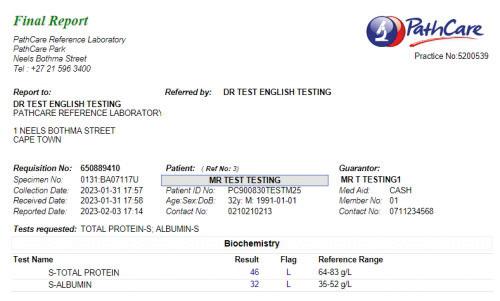








































 nose
nose




















































































































 By Dr Ashley Murugan
By Dr Ashley Murugan

















 CLOCOLAN
CLOCOLAN


























































 nose
nose